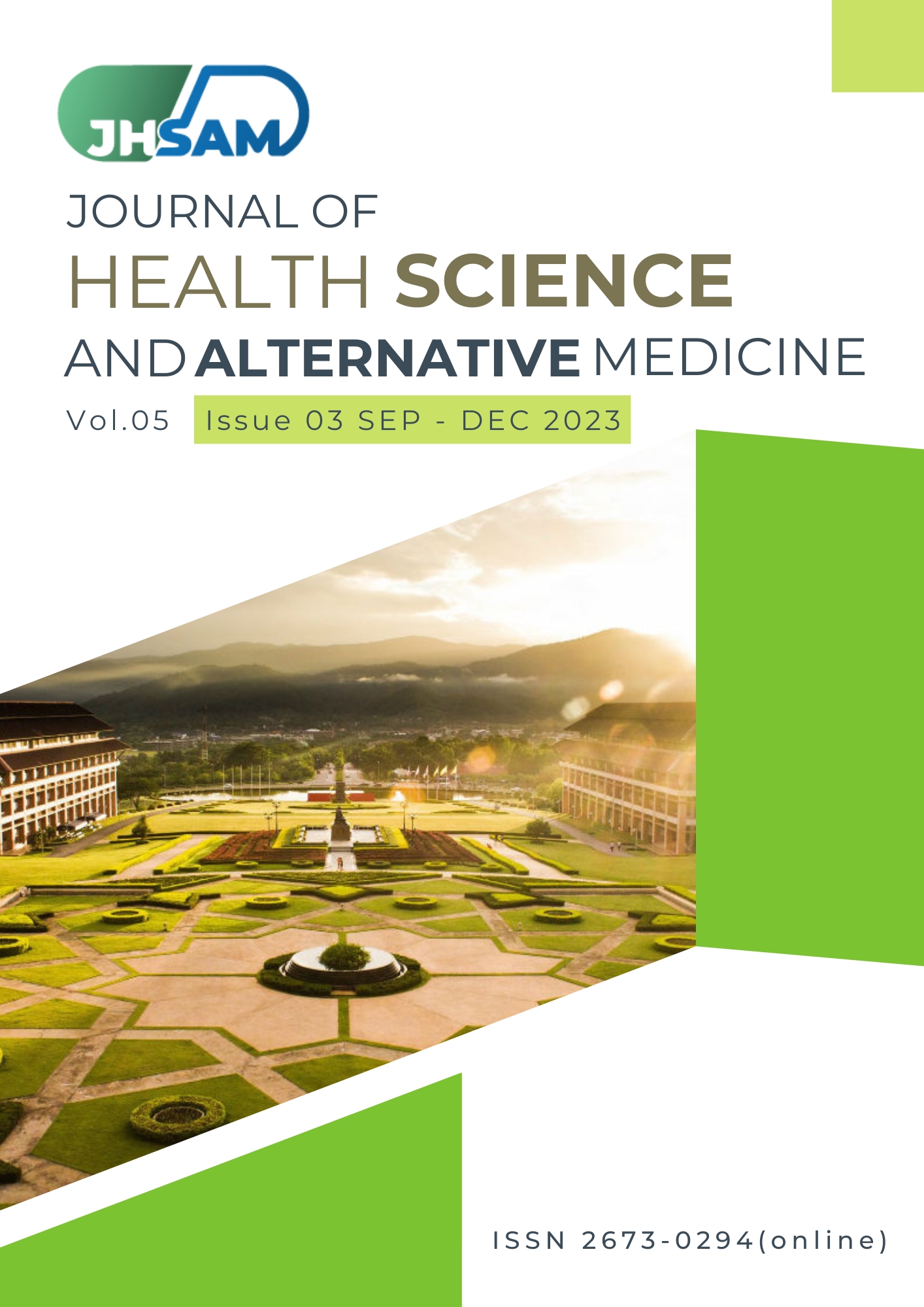Stability of Hybridoma Cell Line Clone 4C91F9 Secreting Anti-E Monoclonal Antibody
Main Article Content
Abstract
Introduction: Since 2018, the Antiserum and Standard Cell Preparation Section, National Blood Center, Thai Red Cross Society (NBC) have succeeded in producing a hybridoma cell line secreted anti-E with a good antibody titer and suitable for blood grouping reagent anti-E production. At first, we established 4 different human monoclonal hybridoma IgM cell lines stably expressing anti-E, namely 4C91A2, 4C91B9, 4C91F9, and 4C91G5, respectively. After that, 4 different cell lines were selected only the perfect one with good growth rate and high titer antibody character. Finally, a clone namely 4C91F9 was selected for culture on a large scale and its supernatant was collected for blood grouping reagent anti-E production. So, we must ensure the 4C91F9 cell line has good antibody titer production stability in the long run. The study aimed to detect the stability of hybridoma cell line clone 4C91F9 secreting anti-E monoclonal antibody from 1st to 3rd generation.
Methods: The cell line clone 4C91F9 secreting 1st generation anti-E was thawed from liquid nitrogen and selected to be the best single cell line with a good growth rate and high titer antibody secretion tested by limiting dilution method. Afterward, the selected cell line will be frozen in liquid nitrogen for 7 days. In addition, the 1st generation cell line that separated from freezing was cultured to harvest supernatant subjected to further serologic testing. The 2nd generation cell line was thawed after being frozen for 7 days for the limit dilution method again until 3rd generation. Serological testing for supernatant from all generation cell lines consisted of antibody identification with panel cells and antibody titration (potency) with R1R2, R1Rz, and r”r red blood cell group O. Also, a specificity test with antigen E positive and antigen E negative red blood cells was performed.
Results: Anti-E antibodies from all three generations of clone 4C91F9 showed perfect stability with high titer. Titers of 512, 1024, and 1024 were obtained at room temperature, and 512, 512, and 512 were obtained at the indirect antiglobulin test (IAT), respectively.
Conclusion: The characteristics of all generations of anti-E production are comparable to the American Association of Blood Banks (AABB) standard. This result confirms the quality of the anti-E monoclonal antibody suitable for being a blood typing reagent produced by Nation Blood Center, Thai Red Cross Society to ensure the safety of the blood donation and transfer process.
Article Details

This work is licensed under a Creative Commons Attribution-NonCommercial-NoDerivatives 4.0 International License.
JHSAM publishes all articles in full open access, meaning unlimited use and reuse of articles with appropriate credit to the authors.
All our articles are published under a Creative Commons "CC-BY-NC-ND 4.0". License which permits use, distribution and reproduction in any medium,
provided that the original work is properly cited and is used for noncommercial purposes.
References
Kohler G, Milstein C. Continuous cultures of fused cells secreting antibody of predefined Specificity. Nature. 1975;256:495-7.
Ponsen S, Premprayoon N. Application of monoclonal antibody in medicine. J Med Biosci. 5(1). 2023;89-96.
Phikulsod S, Poltien R, Uthid K, Tubrod J. Monoclonal blood grouping reagents prepared by National Blood Centre, Thai Red Cross Society: I mouse response to immunization with different B antigens quantity and sources. J Hematol Transfus Med. 1991;1:299-307.
Phikulsod S, Poltien R, Kaewkitiroj P, Uthid K, Tingtoy U, Tubrod J. Monoclonal anti-A reagent using hybridoma technique prepared by National Blood Centre, Thai Red Cross Society. J Hematol Transfus Med. 1992; 2:373-81.
Sakuldamrongpanich T. Monoclonal Antibody;Blood Grouping reagent. Thai J Hematol Transfus Med. 2002; 12: 235-43.
Boonhai S, Aiemumporn K, Tingtoy U. Production of a new anti-M monoclonal reagent using human hybridoma technology. Chula Med J 2016;60:101-13.
Kerdkaewngam K, Posen S, Phonimit S, Tingtoy U, Phikulsod S. Generating the hybridoma cell line by murine monoclonal hybridoma technology for production anti-M and anti-N blood group phenotyping reagent. J Hematol Transfus Med. 2014; 24: 361-9.
Dean L. Blood groups and red cell antigens: the Rh blood group. [Internet]. 2005 [cited 2023 Nov 2]. Available from: www.ncbi.nlm.nih.gov/books/NBK2269/
Ponsen S, Phonimit S, Premprayoon N, Kerdkaewngan K, Tingtoy U. Production of human hybridoma secreting monoclonal antibody against Rh(E) antigen. J Hematol Transfus Med. 2019; 29: 83-90.
Ponsen S, Phonimit S, Premprayoon N, Tingtoy U. Production of anti-D human monoclonal antibody (IgM) using human monoclonal hybridoma technique. Chula Med Bull. 2019; 1: 147–54.
Yeela T, Buathong W. Screening and identification of irregular antibodies in blood donation. Songkla Med J. 2004; 22: 89-93.
Outrakoolpoonsuk K, Bejrachandra S, Saipin J, Leehaphaiboonsakun W, Suratanarungsun V, Plubjuice P. Detection of red cell antibody by enzyme technique. J Hematol Transfus Med.1999; 9: 103-10.
Ponsen S, Premprayoon N, Tingtoy U. Antibody screening and identification in transfusion medicine and benefits of antibodies in development of human monoclonal hybridoma for blood group reagent production. Chula Med Bull.2020; 2(1): 87-96.
John D. Roback, ed. Technical Manual. 16th ed. Bethesda: American Association of Blood Banks; 2008.
Thompson K, Barden G, Sutherland J, Bel-don I, Melamed M. Human monoclonal antibodies to C, c, E, e, and G antigens of the Rh system. Immunology.1990; 71: 323-7.
Meng-Hua Y, Jen-Wei C, Kaito S, Makoto U, Nelson H. T, Sheng-Tang W, Sheng-Mou H, and Yann-Jang C. Universal Detection of Mia Antigen and Frequencies of Glycophorin Hybrids among Blood Donors in Taiwan by Human Monoclonal Antibodies against Mia (MNS7), Mur (MNS10), and MUT (MNS35) Antigens. Diagnostics.2021;11:806.


